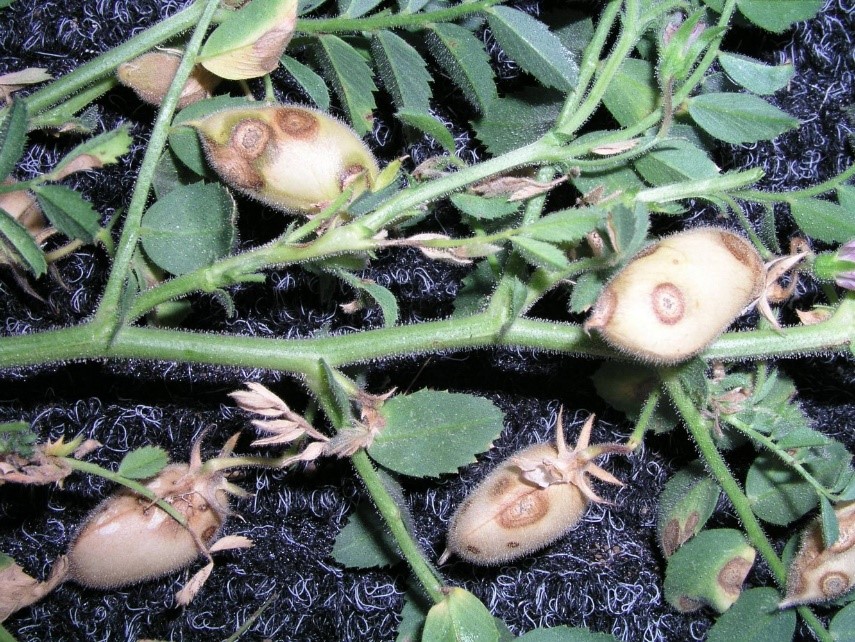
NSW Department of Primary Industries (DPI) are encouraging chickpea growers to check for Ascochyta Blight, with wet seasons and rising temperatures a contributor to high disease load in some crops.
Recent chickpea samples from Dalby, Gunnedah, Merah North, Narrabri, Coonamble, Walgett, Bellata, Cowra and Trangie, received at DPI Tamworth Agricultural Institute confirm Ascochyta Blight is present in some areas.
Rising temperatures, high humidity and frequent rainfall are ideal conditions for Ascochyta Blight to spread, so growers need to be aware of the correct in-crop disease management and fungicide use to control the disease.
NSW DPI Research Officer Field Pathologist, Hayley Wilson said the Ascochyta pathogen survives and spreads in infected chickpea seed, stubble and volunteers.
“It’s important that growers monitor their crops and understand their disease risk for each paddock,” Ms Wilson said.
“Growers should aim to apply an Ascochyta fungicide to crops before rainfall events and monitor the crops 10 to 14 days after each rainfall event.
“Ascochyta fungicides only protect the plant tissues to which they are applied. Any tissue that has fungicide applied is protected for the whole season, but new growth is not protected.
“If growers miss a preventative application before a rainfall event, there is some evidence that certain fungicides applied within 48 hours of the rain starting will stop new infections.”
If growers are unsure on the presence of disease, samples can be sent to the NSW DPI Chickpea Testing Laboratory, Tamworth Agriculture Institute, 4 Marsden Park Road, Calala NSW 2340
Information on is available on the NSW DPI website.
Listen to the podcast on chickpea disease with NSW DPI pathologists Hayley Wilson and Kevin Moore








